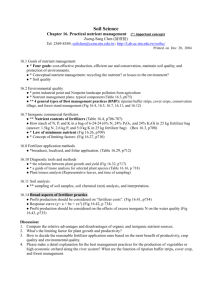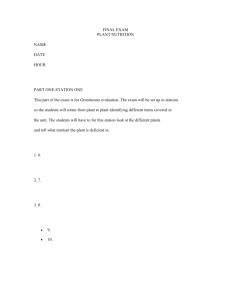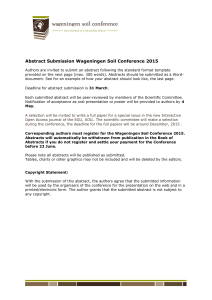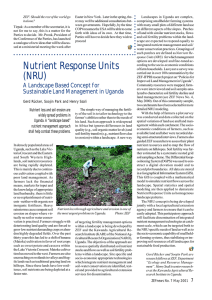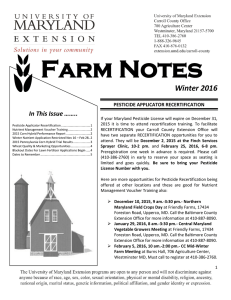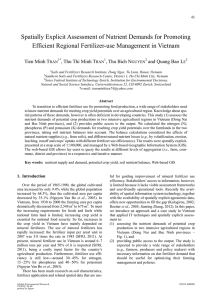Rio Grande Valley Nutrient Management Education Program Extension Education
advertisement
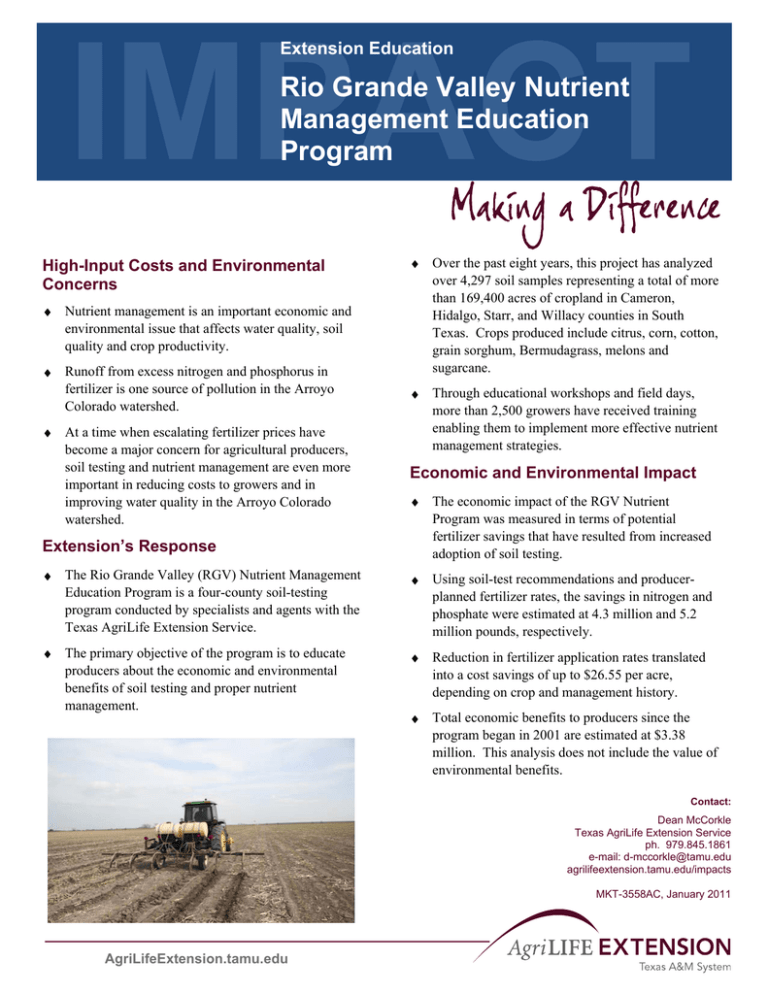
Extension Education Rio Grande Valley Nutrient Management Education Program High-Input Costs and Environmental Concerns Nutrient management is an important economic and environmental issue that affects water quality, soil quality and crop productivity. Runoff from excess nitrogen and phosphorus in fertilizer is one source of pollution in the Arroyo Colorado watershed. At a time when escalating fertilizer prices have become a major concern for agricultural producers, soil testing and nutrient management are even more important in reducing costs to growers and in improving water quality in the Arroyo Colorado watershed. Over the past eight years, this project has analyzed over 4,297 soil samples representing a total of more than 169,400 acres of cropland in Cameron, Hidalgo, Starr, and Willacy counties in South Texas. Crops produced include citrus, corn, cotton, grain sorghum, Bermudagrass, melons and sugarcane. Through educational workshops and field days, more than 2,500 growers have received training enabling them to implement more effective nutrient management strategies. Economic and Environmental Impact Extension’s Response The economic impact of the RGV Nutrient Program was measured in terms of potential fertilizer savings that have resulted from increased adoption of soil testing. The Rio Grande Valley (RGV) Nutrient Management Education Program is a four-county soil-testing program conducted by specialists and agents with the Texas AgriLife Extension Service. Using soil-test recommendations and producerplanned fertilizer rates, the savings in nitrogen and phosphate were estimated at 4.3 million and 5.2 million pounds, respectively. The primary objective of the program is to educate producers about the economic and environmental benefits of soil testing and proper nutrient management. Reduction in fertilizer application rates translated into a cost savings of up to $26.55 per acre, depending on crop and management history. Total economic benefits to producers since the program began in 2001 are estimated at $3.38 million. This analysis does not include the value of environmental benefits. Contact: Dean McCorkle Texas AgriLife Extension Service ph. 979.845.1861 e-mail: d-mccorkle@tamu.edu agrilifeextension.tamu.edu/impacts MKT-3558AC, January 2011 AgriLifeExtension.tamu.edu
